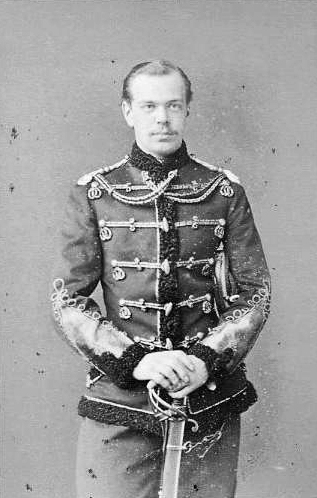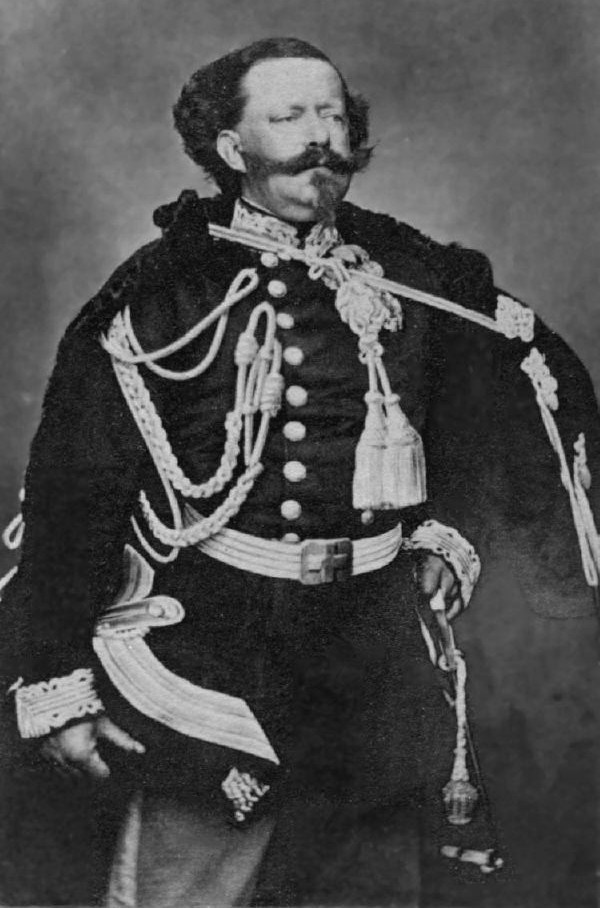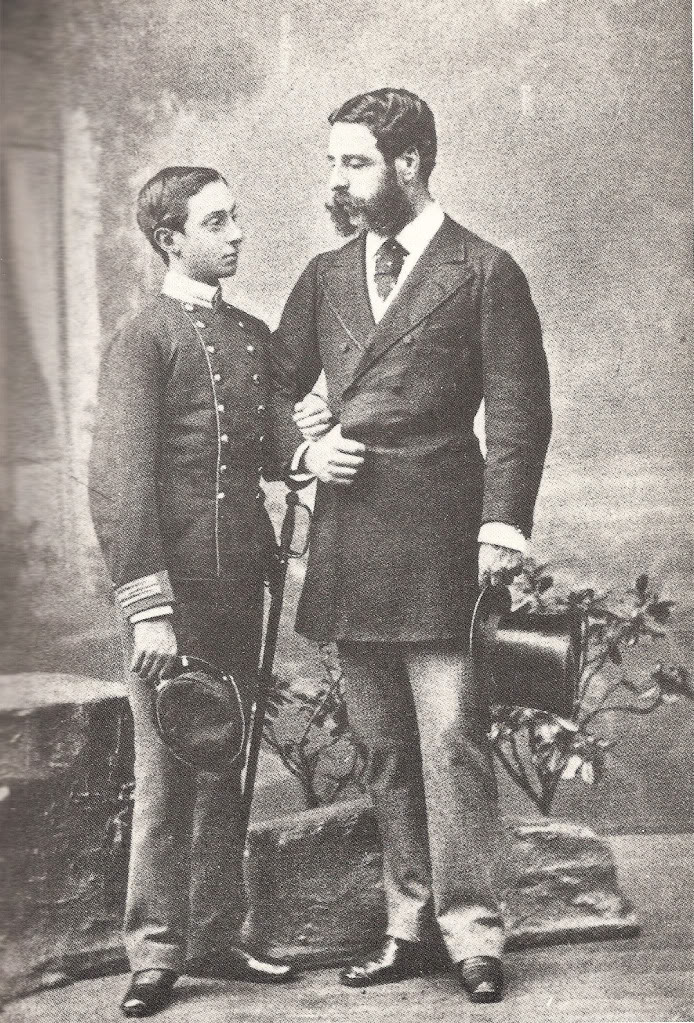|
Royal Order Of Kamehameha I
The Royal Order of Kamehameha I (''Kamehameha I e Hookanaka'') is an order of knighthood established by Kamehameha V in 1865, to promote and defend the sovereignty of the Kingdom of Hawaii. Established by the 1864 Constitution, the Order of Kamehameha I is the second order of its kind in Hawaii. Grades Appointing a member of the Order was determined by the number of living members in each particular grade. At any given time there could only be: * Knight Grand Cross with Collar (CGCOK) – limited to heads of state * Knight Grand Cross (KGCOK) – 10 individuals * Knights Commander (KCOK) – 30 individuals * Knights Companion (KOK) – 50 individuals History After Lot Kapuāiwa took the throne as King Kamehameha V, he established, by special decree, created by the privy council using Article 35 of the Constitution the Order of Kamehameha I on April 11, 1865, named to honor his grandfather Kamehameha I. Kamehameha I was the founder of the Kingdom of Hawaii and the House of ... [...More Info...] [...Related Items...] OR: [Wikipedia] [Google] [Baidu] |
Milan I Of Serbia
Milan Obrenović ( sr-cyr, Милан Обреновић, Milan Obrenović; 22 August 1854 – 11 February 1901) reigned as the prince of Serbia from 1868 to 1882 and subsequently as king from 1882 to 1889. Milan I unexpectedly abdicated in favor of his son, Alexander I of Serbia, in 1889. Early years Birth and infancy in exile Milan Obrenović was born in 1854 in Mărășești, Moldavia where his family had lived in exile ever since the 1842 return of the rival House of Karađorđević to the Serbian throne when they managed to depose Milan's cousin Prince Mihailo Obrenović III. Milan was the son of Miloš Obrenović (1829–1861) and his Moldavian wife Marija Obrenović, née Elena Maria Catargiu. Milan's paternal grandfather (Miloš's father) was Jevrem Obrenović (1790–1856), brother of Miloš Obrenović I, Prince of Serbia. Milan was therefore Prince Miloš's grandnephew. He had only one sibling — sister Tomanija. Shortly after Milan's birth, his parents divorc ... [...More Info...] [...Related Items...] OR: [Wikipedia] [Google] [Baidu] |
Alexander III Of Russia
Alexander III ( rus, Алекса́ндр III Алекса́ндрович, r=Aleksandr III Aleksandrovich; 10 March 18451 November 1894) was Emperor of Russia, King of Poland and Grand Duke of Finland from 13 March 1881 until his death in 1894. He was highly reactionary and reversed some of the liberal reforms of his father, Alexander II. This policy is known in Russia as "counter-reforms" ( rus, контрреформы). Under the influence of Konstantin Pobedonostsev (1827–1907), he opposed any reform that limited his autocratic rule. During his reign, Russia fought no major wars; he was therefore styled "The Peacemaker" ( rus, Миротворец, Mirotvorets, p=mʲɪrɐˈtvorʲɪt͡s). It was he who helped forge the Russo-French Alliance. Personality Grand Duke Alexander Alexandrovich was born on 10 March 1845 at the Winter Palace in Saint Petersburg, Russian Empire, the second son and third child of Tsesarevich Alexander (Future Alexander II) and his first wife ... [...More Info...] [...Related Items...] OR: [Wikipedia] [Google] [Baidu] |
Ludwig II Of Bavaria
Ludwig II (Ludwig Otto Friedrich Wilhelm; 25 August 1845 – 13 June 1886) was King of Bavaria from 1864 until his death in 1886. He is sometimes called the Swan King or ('the Fairy Tale King'). He also held the titles of Count Palatine of the Rhine, Duke of Bavaria, Duke of Franconia, and Duke in Swabia. Ludwig ascended to the throne in 1864 at the age of 18. Two years later, Bavaria and History of Austria, Austria fought Austro-Prussian War, a war against Prussia lasting only a matter of weeks, which they lost. However, in the Franco-Prussian War of 1870, Bavaria sided with Prussia in their successful war against France. Despite Ludwig's reluctance to support the Unification of Germany, Bavaria and 21 other monarchies became part of the new German Empire in 1871 (), with Wilhelm I, German Emperor, Wilhelm I, the Monarchy of Germany, King of Prussia and Ludwig's cousin, as the German Emperor (). Bavaria retained a large degree of autonomy within the Empire under the Constituti ... [...More Info...] [...Related Items...] OR: [Wikipedia] [Google] [Baidu] |
Guangxu Emperor
The Guangxu Emperor (14 August 1871 – 14 November 1908), personal name Zaitian, was the tenth Emperor of the Qing dynasty, and the ninth Qing emperor to rule over China proper. His reign lasted from 1875 to 1908, but in practice he ruled, without Empress Dowager Cixi's influence, only from 1889 to 1898. He initiated the Hundred Days' Reform, but was abruptly stopped when the empress dowager launched a coup in 1898, after which he became powerless and was held under house arrest until his death by poisoning. His era name, "Guangxu", means "glorious succession". The emperor died in 1908 and it was widely suspected at the time that he had been poisoned. A forensic examination on his remains confirmed in 2008 that the cause of death was arsenic poisoning. The level of arsenic in his remains was 2,000 times higher than normal. Accession to the throne and upbringing Zaitian was the second son of Yixuan (Prince Chun), and his primary spouse Yehenara Wanzhen, a younger sister of ... [...More Info...] [...Related Items...] OR: [Wikipedia] [Google] [Baidu] |
Luís I Of Portugal
Dom Luís I (31 October 1838, in Lisbon – 19 October 1889, in Cascais), known as The Popular (Portuguese: O Popular) was a member of the ruling House of Braganza,"While remaining patrilineal dynasts of the House of Saxe-Coburg and Gotha according to pp. 88, 116 of the 1944 ''Almanach de Gotha'', Title 1, Chapter 1, Article 5 of th1838 Portuguese constitutiondeclared, with respect to Ferdinand II of Portugal's issue by his first wife, that 'the Most Serene House of Braganza is the reigning house of Portugal and continues through the Person of the Lady Queen Maria II'. Thus their mutual descendants constitute the Coburg line of the House of Braganza" and King of Portugal from 1861 to 1889. The second son of Queen Maria II and her consort, King Ferdinand, he acceded to the throne upon the death of his elder brother King Pedro V. Reign Luís was a cultured man who wrote vernacular poetry, but had no distinguishing gifts in the politics into which he was thrust by the death of h ... [...More Info...] [...Related Items...] OR: [Wikipedia] [Google] [Baidu] |
Umberto I Of Italy
Umberto I ( it, Umberto Rainerio Carlo Emanuele Giovanni Maria Ferdinando Eugenio di Savoia; 14 March 1844 – 29 July 1900) was King of Italy from 9 January 1878 until his assassination on 29 July 1900. Umberto's reign saw Italy attempt colonial expansion into the Horn of Africa, successfully gaining Eritrea and Somalia despite being defeated by Abyssinia at the Battle of Adwa in 1896. In 1882, he approved the Triple Alliance with the German Empire and Austria-Hungary. He was deeply loathed in leftist circles for his conservatism and support of the Bava Beccaris massacre in Milan. He was especially hated by anarchists, who attempted to assassinate him during the first year of his reign. He was killed by another anarchist, Gaetano Bresci, two years after the Bava Beccaris massacre. Youth The son of Victor Emmanuel II and Archduchess Adelaide of Austria, Umberto was born in Turin, which was then capital of The Kingdom of Piedmont-Sardinia, on 14 March 1844, his father's 24 ... [...More Info...] [...Related Items...] OR: [Wikipedia] [Google] [Baidu] |
Victor Emmanuel II Of Italy
en, Victor Emmanuel Maria Albert Eugene Ferdinand Thomas , house = Savoy , father = Charles Albert of Sardinia , mother = Maria Theresa of Austria , religion = Roman Catholicism , image_size = 252px , succession1 = King of Sardinia and Duke of Savoy , reign1 = 23 March 1849 – 17 March 1861 , predecessor1 = Charles Albert , reg-type1 = , regent1 = , signature = Signatur Viktor Emanuel II..PNG Victor Emmanuel II ( it, Vittorio Emanuele II; full name: ''Vittorio Emanuele Maria Alberto Eugenio Ferdinando Tommaso di Savoia''; 14 March 1820 – 9 January 1878) was King of Sardinia from 1849 until 17 March 1861, when he assumed the title of King of Italy and became the first king of an independent, united Italy since the 6th century, a title he held until his death in 1878. Borrowing from the old Latin title ''Pater Patriae'' of the Roman emperors, the Italians gave him the epithet of '' Father of the Fatherland'' ( it, Padr ... [...More Info...] [...Related Items...] OR: [Wikipedia] [Google] [Baidu] |
Alfonso XII Of Spain
Alfonso XII (Alfonso Francisco de Asís Fernando Pío Juan María de la Concepción Gregorio Pelayo; 28 November 185725 November 1885), also known as El Pacificador or the Peacemaker, was King of Spain from 29 December 1874 to his death in 1885. After a revolution that deposed his mother Isabella II from the throne in 1868, Alfonso studied in Austria and France. His mother abdicated in his favour in 1870, and he returned to Spain as king in 1874 following a military coup against the First Republic. Alfonso died aged 27 in 1885, and was succeeded by his son, Alfonso XIII, who was born the following year. He is the most recent monarch of Spain to have died while on the throne. Political background, early life and paternity Alfonso was born in Madrid as the eldest son of Queen Isabella II on 28 November 1857. His official father, Isabella's husband Francisco de Asís, has been generally viewed as effeminate, impotent or homosexual, leading writers to question his biological pater ... [...More Info...] [...Related Items...] OR: [Wikipedia] [Google] [Baidu] |
Leopold II Of Belgium
* german: link=no, Leopold Ludwig Philipp Maria Viktor , house = Saxe-Coburg and Gotha , father = Leopold I of Belgium , mother = Louise of Orléans , birth_date = , birth_place = Brussels, Belgium , death_date = , death_place = Laeken, Brussels, Belgium , burial_place = Church of Our Lady of Laeken , religion = Roman Catholicism Leopold II (french: link=no, Léopold Louis Philippe Marie Victor, nl, Leopold Lodewijk Filips Maria Victor; 9 April 1835 – 17 December 1909) was the second King of the Belgians from 1865 to 1909 and the self-made autocratic ruler of the Congo Free State from 1885 to 1908. Born in Brussels as the second but eldest-surviving son of Leopold I and Louise of Orléans, Leopold succeeded his father to the Belgian throne in 1865 and reigned for exactly 44 years until his death, the longest reign of a Belgian monarch to date. He died without surviving legitimate sons. The current Belgian king descends from his ne ... [...More Info...] [...Related Items...] OR: [Wikipedia] [Google] [Baidu] |
Chulalongkorn
Chulalongkorn ( th, จุฬาลงกรณ์, 20 September 1853 – 23 October 1910) was the fifth monarch of Siam under the House of Chakri, titled Rama V. He was known to the Siamese of his time as ''Phra Phuttha Chao Luang'' (พระพุทธเจ้าหลวง, the Royal Buddha). Chulalongkorn's reign was characterised by the modernisation of Siam, governmental and social reforms, and territorial concessions to the British and French. As Siam was surrounded by European colonies, Chulalongkorn, through his policies and acts, ensured the independence of Siam. All his reforms were dedicated to ensuring Siam's independence given the increasing encroachment of Western powers, so that Chulalongkorn earned the epithet ''Phra Piya Maharat'' (พระปิยมหาราช, the Great Beloved King). Early life King Chulalongkorn was born on 20 September 1853 to King Mongkut and Queen Debsirindra and given the name Chulalongkorn. In 1861, he was designated ' ... [...More Info...] [...Related Items...] OR: [Wikipedia] [Google] [Baidu] |
Emperor Meiji
, also called or , was the 122nd emperor of Japan according to the traditional order of succession. Reigning from 13 February 1867 to his death, he was the first monarch of the Empire of Japan and presided over the Meiji era. He was the figurehead of the Meiji Restoration, a series of rapid changes that witnessed Japan's transformation from an isolationist, feudal state to an industrialized world power. At the time of Emperor Meiji's birth in 1852, Japan was a feudal pre-industrial country dominated by the isolationist Tokugawa shogunate and the ''daimyō'' subject to it, who ruled over the country's 270 decentralized domains. By the time of his death, Japan had undergone an extensive political, economic, and social revolution and emerged as one of the great powers on the world stage. ''The New York Times'' summarized this transformation at the emperor's funeral in 1912: "the contrast between that which preceded the funeral car and that which followed it was striking indeed. ... [...More Info...] [...Related Items...] OR: [Wikipedia] [Google] [Baidu] |
Franz Joseph I Of Austria
Franz Joseph I or Francis Joseph I (german: Franz Joseph Karl, hu, Ferenc József Károly, 18 August 1830 – 21 November 1916) was Emperor of Austria, King of Hungary, and the Grand title of the Emperor of Austria, other states of the Habsburg monarchy from 2 December 1848 until his death on 21 November 1916. In the early part of his reign, his realms and territories were referred to as the Austrian Empire, but were reconstituted as the dual monarchy of the Austro-Hungarian Empire in 1867. From 1 May 1850 to 24 August 1866, Franz Joseph was also President of the German Confederation. In December 1848, Franz Joseph's uncle Ferdinand I of Austria, Emperor Ferdinand abdicated the throne at Olomouc, as part of Minister President Felix zu Schwarzenberg's plan to end the Revolutions of 1848 in Hungary. Franz Joseph then acceded to the throne. Largely considered to be a reactionary, he spent his early reign resisting constitutionalism in his domains. The Austrian Empire was forced to c ... [...More Info...] [...Related Items...] OR: [Wikipedia] [Google] [Baidu] |
.jpg)



.png)





